Japanese primrose: description, care, reproduction and pest control
Japanese primrose belongs to the category of perennial plants that prefers light soils. This plant is characterized by ease of care and a rather attractive appearance, which arouses the interest of many gardeners and landscape designers.
Content:
Description of the plant
Japanese primrose is characterized by the presence of a very developed basal deciduous rosette. The foliage of this plant has bright green color and jagged ends. Stems with flowers rise significantly above the rosette of leaves. The stem height can be 20 to 30 centimeters.
This plant is characterized by the presence of strong peduncles and large inflorescences.
Japanese primrose flowers are evenly distributed on the flower plant. The diameter of the flower is about 2 centimeters.
The flowers have a unique arrangement and can form about 5-6 tiers on the peduncle. This plant begins to bloom in June or July. The flowering period of primrose is about 30 days.
Care features
Japanese primrose is very fond of the sun, so it must be planted in well-lit places. This plant loves moisture very much, so it needs to be regularly watered. Especially carefully monitor soil moisture necessary in the spring. This is due to the fact that at the moment the primrose is gaining strength that it will need for further flowering.
Japanese primrose requires regular feeding:
It is necessary to feed this plant 4 times per season.
- The first feeding should be done immediately after the snow melts. To perform this action, mineral fertilizers are used.
- A few weeks after the first top dressing, superphosphate is added to the soil.
- The third feeding is done at the end of July, which allows the plant to lay new buds. To perform this action use organic fertilizers, which include superphosphate. The fourth feeding is the first step in preparing for wintering. It is produced at the end of August using superphosphate.
Japanese primrose loves loose soil, which necessitates regular weeding. Also, under the primrose, it is necessary to add and evenly level a thin layer of new soil annually. This plant also requires periodic planting.
To do this, it is necessary to dig out bushes every 3-4 years and divide them into several new ones.
In order to protect the plant from various negative influences, the leaves are left on it until late autumn. Despite the fact that the Japanese primrose is a fairly winter-hardy plant, it must be covered for the winter with a thin layer of leaves.
Primrose care consists in performing the following actions:
- The correct choice of place and soil for planting.
- Regular watering.
- Weeding.
- Fertilization.
- Proper preparation for wintering.
Performing all these actions will help not only maintain the vitality of the Japanese primrose, but also significantly improve its appearance and fruiting.
Reproduction of Japanese primrose
Japanese primrose can reproduce in three ways:
- Using seeds.
- By cutting leaves.
- Root cuttings.
- By dividing the bushes.
The easiest way to propagate Japanese primrose is to use seeds. To do this, you need to collect the seeds and in the same year, in the fall, plant them in the ground. You can plant seeds both in open ground and in a greenhouse.
If you want to propagate Japanese primrose using seedlings, then:
- Planting seeds in the room must be done in February or March.
- For this, special boxes are used, which are filled with leaf humus, sand and weathered peat.
- In order for the seeds to give a good similarity, they must be sprinkled with a very thin layer of earth during planting.
- Primrose boxes must be covered with plastic or glass.
- This will significantly speed up the ascent of this plant.
- After the primrose has risen, it is gradually accustomed to fresh air by opening a film or glass.
- The film opening period should be gradually increased.
At the first seedlings, it is very important not to overmoisten the soil. Otherwise, Japanese primrose may die. Seedlings can bloom only in the second year after planting.
Very often, the method of leaf cuttings is used to propagate Japanese primrose:
- This procedure is performed in late spring. The primrose leaves must not be cut off, but pinched off.
- This will significantly increase the rate of plant survival.
- Leaves can be placed in a container of water and wait for the moment when they take root, and then plant them in the ground.
- It is also possible to plant the leaves immediately in the ground.
- In this case, they need to provide moderate and systematic watering.
Plant propagation by root cuttings is carried out in the autumn.
To do this, you need to choose strong enough roots and cut them out. from the root system of the primrose bush... The roots are placed immediately in the ground. To perform this action, you must use greenhouses. In order for the roots to take root faster and sprout, vertical cuts are made on them.
One of the easiest ways to reproduce Japanese primrose is to divide the bush:
- This procedure can be performed both in the autumn and in the spring.
- To do this, you need to dig up a bush and divide it with your bare hands into several parts.
- In this case, you should not use any cutting objects, which will increase the level of survival of the bush.
- Newly formed primrose bushes are planted in the ground and provide them with regular and moderate watering.
Absolutely all methods of breeding Japanese primrose are quite effective. The choice of method directly depends on the preferences of the gardener.
Plant diseases and pests
Despite the fact that primrose is a fairly hardy plant, it can still be subject to some diseases. Diseases are most often caused by excessive soil moisture.
Gray rot:
- In the event that the plant remains in conditions of excess moisture, as well as stagnant air, it can get sick with gray rot.
- During this disease, weeping spots will appear on the leaf plates, peduncles and flowers, which are characterized by the presence of a gray plaque. Over time, these spots will spread to the entire leaf, peduncle or flower, which will cause it to rot completely.
- In the event that the disease progresses for a sufficiently long time, the Japanese primrose may die.
- That is why, at the first manifestations of gray rot, it is necessary to remove the affected areas of the plant and spray them with insecticides.
- For this purpose, a variety of fugicides can be used.
In order to prevent the disease of primrose with Japanese gray rot, it is necessary to plant it in sunny places that are very well ventilated. By planting the plant in drained soil, disease can also be avoided.
If Japanese primrose stays in conditions of cold and high humidity for a long time, then it can tolerate a disease such as ramulariasis:
- This disease is characterized by the appearance of rounded spots, a light yellow color on the leaf blade.
- After a while, these spots rot inside, and a hole forms in their place.
- With this disease, there is also a plaque of the fungus on the lower part of the leaf.
- In the event that the disease progresses for a sufficiently long time, the Japanese primrose may die.
- At the first manifestations of this disease, it is necessary to remove the affected areas of the plant and spray them with insecticides.
- For this purpose, a variety of fugicides can be used.
Sometimes Japanese primrose is capable of undergoing a disease such as leaf spot:
- This fungal disease occurs as a result of high humidity.
- It is characterized by the presence of brown spots on the sheets.
- If this disease occurs on Japanese primrose, it is necessary to immediately remove the affected areas from the plant and ensure that the soil dries out.
- It is also necessary to spray the affected Japanese primrose bushes with insecticides.
- In order to prevent the disease of primrose with Japanese leaf spot, it is necessary to plant it in sunny places that are very well ventilated.
- By planting the plant in drained soil, disease can also be avoided.
As for pests, Japanese primrose very rarely suffers from their negative influence, but still such cases do happen.
In wet and damp weather, snails or slugs can attack this plant. These pests can be picked from the plant with bare hands and discarded. In order to prevent these pests from attacking the plant, sand must be poured around the primrose. It will be very difficult for snails and slugs to move through the sand, which will limit their ability to attack the plant. Also, a variety of chemicals can be used to combat snails and slugs.
Very often, primrose is attacked by a spider mite - a small spider-like creature that lives on the underside of the leaves:
- This pest feeds on plant sap, which can lead to its death.
- In warm weather, spider mites multiply very quickly, which significantly increases their attack on the plant.
- If this pest is found on Japanese primrose, it is necessary to protect it from other plants and spray it with small droplets.
- For this purpose, a variety of insecticide solutions can be used.
- It is necessary to process not only the bush on which the spider mite was found, but also the area around it, since this pest is capable of spreading over a very long distance.
- Also, Japanese primrose can be attacked by fleas and gnawing scoops.
To combat these pests, it is necessary to treat the plant with insecticides. unable to undergo disease, moreover, it is very rarely attacked by pests. If you notice a disease or pest on a plant, then this means that it is necessary not only to fight them, but also to provide full care for the plant. This will limit the onset of disease and ensure full growth and development.
More information can be found in the video.



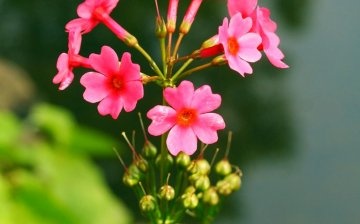



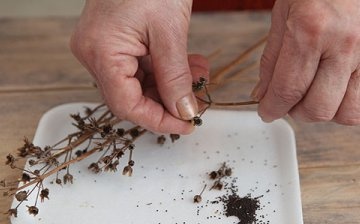
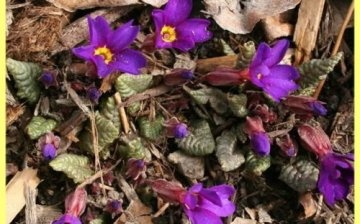








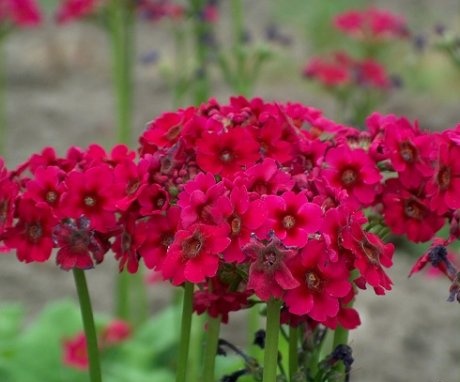
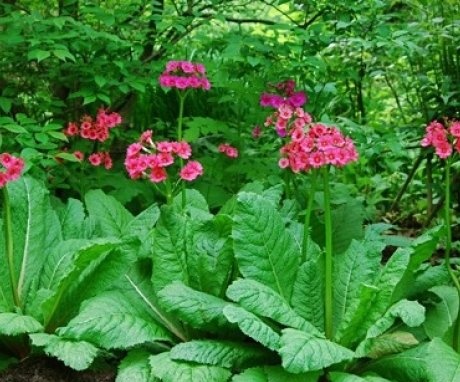
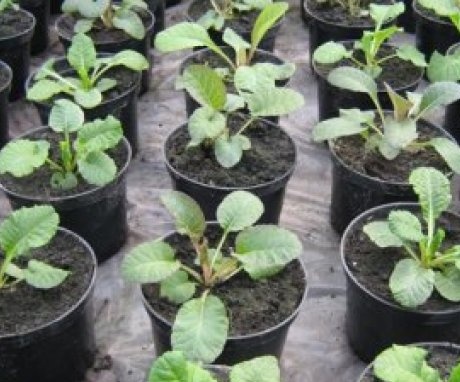
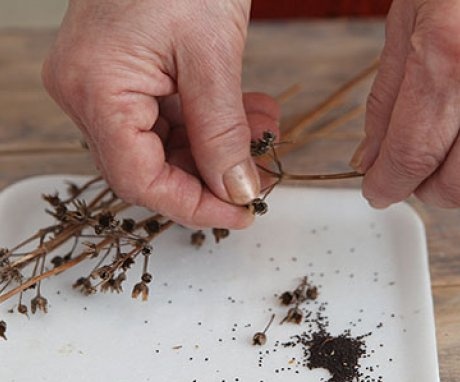
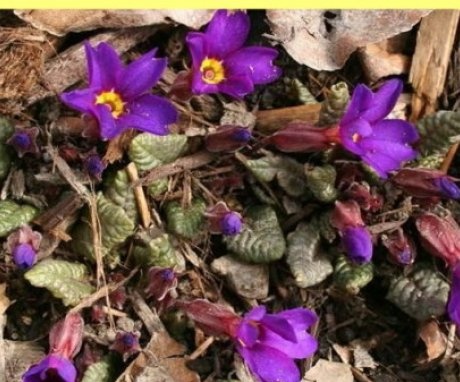
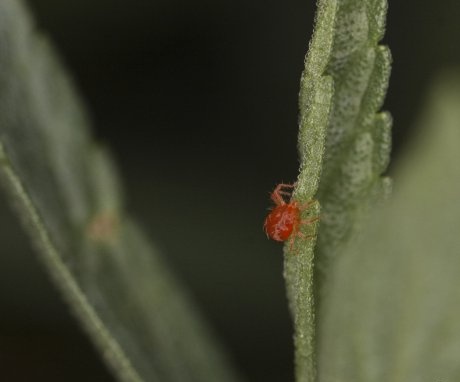
In my opinion, dividing the bush during reproduction is the most effective way. In this case, the gardener himself controls the whole process and there is a probability of 100% preservation of the primrose.